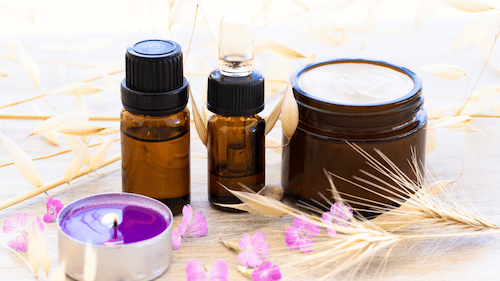
The eco-friendly consumer market is now in full flow. Every area of our lives is getting an eco-friendly revamp, and makeup is no exception. The term eco-friendly is now a popular term with many cosmetic brands.
So, what exactly is eco-friendly makeup? Eco-friendly makeup is typically made from organic ingredients from sustainable sources that are naturally biodegradable. They’re sold in eco-packaging, possibly come with a refillable container, and are cruelty-free.
This article will help you to identify eco-friendly brands. It will discuss what they use to create their makeup and package it. We hope this informs you on how to make the best choice possible for the planet.
Why Eco-Friendly Makeup?
There is an urgency for us all to make more eco-conscious consumer choices. Climate change is revealing the extent of our negative impact on our environment and what we must do to change.
There is no concise definition of the term “eco-friendly” per se. It is a term typically associated with anything that is explicitly trying to mitigate its negative impact on the environment. This might be through a reduction in carbon footprint, the use of eco-materials, the use of renewable energy sources, and/or avoiding animal products or testing.
The eco-friendly term can be attributed to a product, company, process, or system. The common belief when using something eco-friendly is that significant action has been taken to mitigate the impact on the planet.
You may not consider makeup as being an issue for the environment, but it does play a significant role. There is a noticeable impact through the production, packaging, and distribution, but also the effect of makeup once washed off and sent down the drain.
Production, Packaging, and Distribution
While 90% of us recycle our kitchen waste, only 50% of us recycle our bathroom waste. This includes shampoo, conditioner, and shower gel bottles. This results in 2.7 billion plastic bottles hitting our landfills each year.
Plastic can take up to 500 years to decompose and leeches harmful chemicals into the ground during this time. This affects soil erosion rates and negatively impacts local wildlife and water sources. A further 120 billion tonnes of other plastic packaging is produced each year in the cosmetics industry alone.
The cardboard used for the majority of cosmetic packaging contributes to the loss of 18 million acres of forest each year.
These figures are astounding and shocking. They’re proof that our current cosmetics industry is not sustainable and incredibly damaging to our planet. We must change now.
Chemicals
While you may believe that your cosmetics are natural (and sometimes even sold as being natural), many are still very much the opposite. Brands use minimal natural ingredients opting for cheap harsh chemicals and toxic ingredients.
Even some companies that are moving towards natural ingredients are doing so irresponsibly. Many of them source natural ingredients from unsustainable sources, where environmental and human rights issues are commonplace. Pesticides are used to help with cultivation, and workers are paid very little in extremely demanding jobs on farms.
Toxic chemicals pose a serious threat to our environment once they find their way into our oceans and soil. Lakes, rivers, and streams are also under serious threat. Once entered into the water, these chemicals start to break down and harm wildlife, flora, and fauna.
The chemicals then evaporate into our atmosphere, which then falls back to earth in the form of rain. These chemicals poison our soils in which our food and crops grow. Thus, the toxic cycle of chemical pollution continues indefinitely.
Harm to Animals
As already discussed, wildlife is negatively affected by the pollution of the cosmetic industry. However, other animals are also harmed when cosmetic brands use animal-derived ingredients and test their products on animals.
Common animal-derived products used in the cosmetic industry include:
- Honey
- Beeswax
- Lanolin (wool grease)
- Squalene (shark liver oil)
- Carmine (crushed-up beetles)
- Gelatin (cow or pig bones, tendons or ligaments)
- Allantoin (cow urine)
- Ambergris (whale vomit)
- Placenta (sheep organs)
Many traditional cosmetic brands play a direct role in the harm of these animals to create your favorite cosmetics. All of the listed ingredients above are entirely unnecessary in today’s modern cosmetics industry. The vegan beauty industry is proof these ingredients are no longer required for our cosmetics needs.
Animal testing is also a big issue. Many brands pay laboratories all around the world to carry out tests of their products on animals before releasing them to the public. It’s thought that 150,000 to 200,000 animals are abused and killed in the cosmetic industry each and every year. These animals most commonly include:
- Rabbits
- Guinea pigs
- Hamsters
- Rats
- Mice
Tests on these animals typically include skin and eye irritation tests where the proposed chemicals are rubbed onto the animal, and the effects are observed. Animal testing is, of course, totally inhumane and is entirely unnecessary. There are now many alternatives to animal testing.
What is Eco-Friendly Makeup?
Eco-friendly makeup is created by conscious companies that choose to use environmental and animal-friendly business practices. This ethos is reflected throughout its entire business, including material sourcing, production, packaging, distribution, and consumer use.
Eco-friendly makeup brands aim to reduce waste as much as possible, operate sustainably, and have as little negative impact on the earth as possible.
Organic Ingredients
Eco-friendly makeup is typically created using raw materials from a sustainable source. This will typically include organic ingredients, such as:
- Almond Oil
- Chamomile Oil
- Jojoba Oil
- Lilli Pilli Oil
- Plum Seed Oil
- Safflower Oil
- Ylang Ylang Oil
- Aloe Juice
- White, Black, and Green Tea Leaf
- Vitamin A (Carrot Seed Oil)
Eco-friendly makeup will try to avoid as many of the following as possible:
- Petrochemicals, synthetic substances or mineral oils
- Ingredients of animal origin
- Talc or Bismuth Oxychloride
- Parabens (Butylparaben, Ethylparaben, Methylparaben, Isobutylparaben, and Propylparaben)
- Harmful fillers
- Genetically modified ingredients
- Fragrances and color components of synthetic origin
- Chelating agents based on EDTA
- Gluten or lactose
- The fatty chain source material of petrochemical origin
- Sulphonation, ethoxylation, and propoxylation
- Alkyl sulphates
- Alkyl ether sulphates
- Polyethylene glycol
- Polysorbates
- Ethanolamides
Biodegradable Formulas
Chemicals that leach into the soil and ocean once washed down the drain is a huge issue in the cosmetic industry. Now, eco-friendly brands can use formulas that naturally break down and decompose without harming the environment or surrounding wildlife.
These formulas do not contain microplastics that have been the center of much controversy over recent years. These microplastics have been found in the stomachs of marine life and animals all over the world.
Eco-Packaging
Eco-friendly makeup brands typically use packaging that is recyclable or compostable. This helps to avoid plastic and the purchase of materials from a new source. Recyclable and compostable materials put much less pressure on the environment. Some brands are even using eco-materials that can dissolve in water.
The most common biodegradable eco-materials currently being used for packaging include:
- Paper
- Cardboard
- Bamboo
- Cornstarch
- Bioplastics
- Leaf plates
- Mushroom
Refillable Containers
As mentioned earlier, one of the most significant issues with the cosmetic industry is the amount of waste. When consumers are finished with a product, they throw it in the trash, which then ends up in a landfill.
Refillable containers are a smart way to avoid this issue. Some eco-friendly brands are now selling their products with stainless steel containers, which they can refill when finished with. This means you only need to buy the packaging once.
The refills are then delivered to your door in a lightweight, biodegradable package so you can refill your steel container. This helps to significantly reduce the amount of packaging that would typically have been sold with each product.
Cruelty-Free
Any company that sells a product not containing animal-derived ingredients and does not test their product on animals is labeled cruelty-free. The animal agriculture industry is a chief leader in global gas emissions, contributing to climate change.
By avoiding animal ingredients and animal testing, brands can heavily reduce the carbon footprint of their products and help animals simultaneously. Cruelty-free makeup has been gaining popularity due to the massive recent rise in veganism and eco-conscious consumers.
Final Thoughts
It’s imperative that when you switch to eco-friendly makeup brands that you do your research. Look into how their products are created, with what ingredients, using what packaging, and the ability to dispose of them appropriately when finished with.
Not all eco-friendly brands are equal, but you can make the beast conscious decision with the information discussed in this article. For those with the choice, there is no reason to buy anything other than eco-friendly makeup this year.



